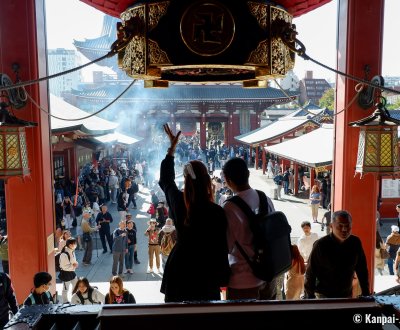Overtourism in Japan
Places And Times Plagued By Mass Tourism
We started writing this article on overtourism in 2019, shortly after the 30 million visitors per year threshold was exceeded in Japan. Back then, our focus was on Kyoto with increased concerns due to the upcoming Tokyo Olympics 🏅 (who would have thought the Games would end up in a flop!).
At Kanpai! we have already been observing tourism increase in Japan and its consequences for more than 10 years, up to a time when China and Japan did not have a visa-waiver program for tourists yet.
In the meantime, the Covid 🦠 pandemic turned some of the archipelago’s most popular areas into ghost towns. Our reporters in Japan then had the unique privilege of visiting these places without encountering any foreign tourist.
The resuming of inbound travel to Japan in October 2022 has been quite brutal, after 2 years and a half of a quasi-shutdown of tourism in the archipelago: 2019’s records have been broken one after the other as soon as 2023, starting by the number of overnight stays. To the point that beyond the 迷惑 meiwaku, the annoyance, already highlighted by Logan Paul’s mischiefs in late 2017, Japan has coined the expression 観光公害 kanko kogai, "touristic pollution" in 2018: that includes littering and even damaging goods, places losing their charm as they are overflown with tourists, etc.
As the situation changed quite a bit, spring 2024 is a good time to dive into this hot topic again, and review its many nuances.

📊 Current situation, figures and objectives
📄 2023’s findings
Between 2017 and 2019 included, Japan received each year between 29 to 32 million foreign visitors. The March 2020 to October 2022 closing caused these last 3 years to naturally be statistically catastrophic. However, good figures have been restored in 2023 as a little bit more than 24 million tourists have visited the archipelago, more than in 2016.
Interestingly, monthly arrivals have been increasing almost constantly throughout the year, reflecting the inertia at the reopening, as well as the sluggish resuming of Chinese tourism that was still considerably slowed down by the non-access to traveling visas. Thus, October 2023 has seen more international visitors than October 2019. It would not be surprising if the 30 million foreign visitors threshold is exceeded again in 2024.
Japan was also hit by inflation, but the doubling of flight prices and the spectacular rise of the JR Pass’s price can be more or less toned down by the weak Yen 💴. Visitors coming from Euro or US dollar areas currently benefit from the Yen’s low exchange rate, but it might not last long according to the Bank of Japan; one should therefore plan a trip as soon as possible to keep the travel affordable.
As of September 2023, according to a representative of the Japan National Tourism Organization, the Japanese government is not aiming at a specific number of travelers anymore but rather at a spending target. While Japan just lost to Germany its position as the 3rd economic power in the world, the country switched to aiming at an economically flourishing tourism without relying on the masses.
Regardless, Japan is having a hard time handling 30 million tourists, despite its 126 million population. In comparison, France with half the population receives 2,5 more times travelers per year.

🏨 A shaky recovery after Covid
Japanese tourism professionals and airlines are naturally delighted by the coming back of revenue, even if everything was not ready for the best welcome of tourists, sometimes giving a disappointing insight on the famous Japanese omotenashi and service spirit.
Thus, some "old-fashioned" accommodation facilities may have encounter a lack of multilingual staff, or simply a staff shortage at all, especially at the beginning of the recovery, making the experience sometimes less pleasant. Even the upscale hotel 🏨 chain Hilton made fun of the situation, with an advertising campaign mocking the stiffness of traditional ryokan inns to emphasize the flexibility of its famous Conrad Tokyo Hotel.
But what strikes the most is obviously the increase of the Japan Rail Pass' price by 70% in October 2023, creating a stupid paradox: with this uptick tourists are prompted to pack even more in Tokyo (and consequently in Kyoto) and forgo lesser popular areas. While it is now possible to buy Japanese train 🚅 tickets from overseas, tourism is Japan has unfortunately become more polarized.
Meanwhile, the IC cards (Suica, Icoca, etc.) supply, the digital wallets that are so convenient and essential to a trip in Japan, has become very difficult. Regional outlets of the Japan Railways, especially JR East in Tokyo, announced a shortage of semi-conductors in June 2023 as a cause, but it would not be surprising that the JR Group is actually trying to make tourists purchase the not so convenient "Welcome Suica" only.
Travelers should also be made aware of hawkers, such as fake mendicant monks, or even fake taxis driving in the areas most frequented by foreign travelers, such as airports. In the advent of an accident with such taxi, the cost could be high as insurances do not cover damages. Fortunately, they are easy to spot and avoid: their license plate do not sport the green background or frame, which are characteristic of duly licensed taxis. Make sure you never ride in the non official taxis!
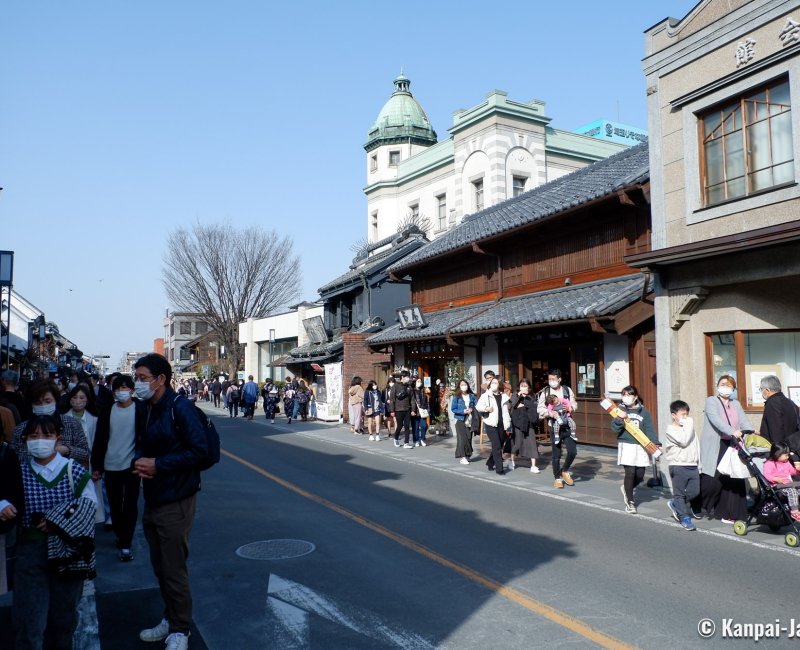
🚶 Japan’s most affected areas
Before reviewing the archipelago’s areas where visitors flock, it is important to note that this phenomenon is not exclusive to Japan. Overtourism is mainly occurring in places with small superficies, starting by Europe: for example Venice, Barcelona, Dubrovnik, Amsterdam, Santorini or Reykjavik. But other territories are also affected such as some islands in Thailand, or monuments like the Taj Mahal or the Machu Picchu.
The causes of mass tourism in all of these destinations always combine the same following factors:
- Availability of short and medium-haul low cost flights;
- Cruise boats and tourists coaches unloading packs of visitors;
- Specific locations that are excessively represented in the medias and on social networks (especially Instagram), to which the majority of visitors gather.
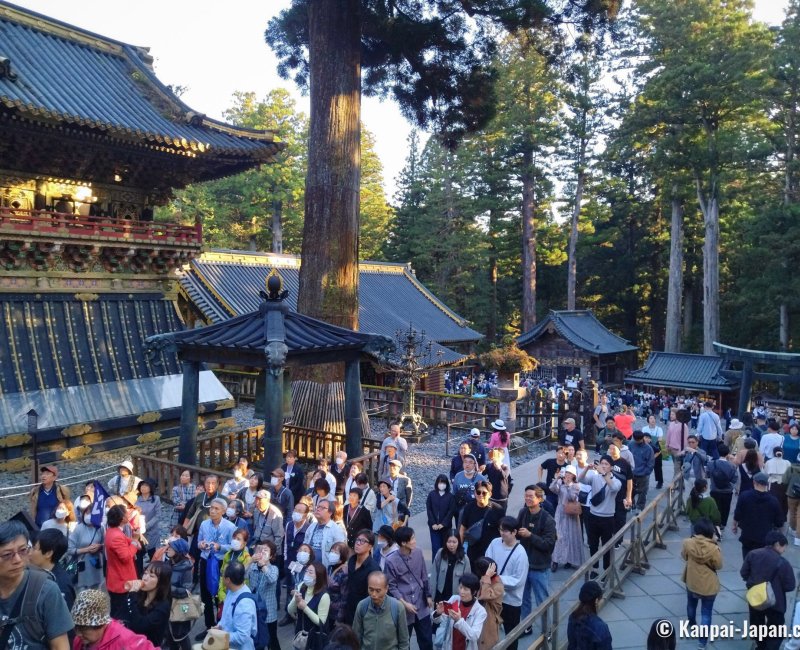
⛩️ The case of Kyoto
The 2,000 temples and shrines former capital is naturally the tree hiding the forest. It is probably the first place that comes to mind when speaking of overtourism in Japan, due to its topographical constraints, the many places closing around 5 p.m. and attractive seasonal peaks (sakura 🌸 and koyo 🍁), but the reality is more nuanced.
There is of course, the infamous must-sees:
- Fushimi Inari Taisha, the10,000 vermilion torii ⛩️ gates shrine;
- Kinkaku-ji, the Golden Pavilion;
- Arashiyama Bamboo Grove, in the vicinity of the Kinkaku-ji;
- Kiyomizu-dera and, broadly speaking the road from the entrance to Sannenzaka;
- Gion, the city center’s traditional district, where it is possible to encounter Geisha;
- And recently, Nishiki Market, which is now more a place for strolling than grocery shopping and is gradually transitioning into an arcade filled with street-food bars in lieu of a food market.
Figures, however, show that foreign tourists are a minority in Kyoto, compared to the number of Japanese visitors: Kyoto received 53,5 million visitors in 2019, but the antique city’s streets were still filled with 21 million visitors in 2021 when the borders were closed! In 2018, foreign travelers were only 10 millions in the historical capital (so just 20% of the total) against 500,000 in 2008.
To improve tourists traffic, the municipality has already taken measures, or found money to make various arrangements, especially during the seasonal peaks:
- The publishing of a brochure listing the most crowded sites and the best hours for a quieter visit;
- Messages in foreign languages, displayed on screens at the main Kyoto station and at Karasuma Oike station, to remind international visitors the good practices when encountering Maikos and prevent harassment (the first "Akimahen" campaign started in 2015);
- The increase of coin lockers / luggage storage facilities, to avoid hauling suitcases and big bags in touristic sites and buses;
- A collaboration with the JNTO to raise awareness on a tourist etiquette towards travel agents in China, Singapore and Australia;
- The increase of extra bus services, especially on the "Raku" lines dedicated to tourists, and a new strollers symbol; and,
- The adjustment of the One-day Passes to use in the municipality’s public transports network:
- End of the Bus’ one-day pass replaced by a Bus+ Subway Pass; and,
- Initiation of a survey on special fares for non-residents.
On a side note, Kyoto City is very indebted and is often on the verge of bankruptcy, which makes its relationship with tourists complicated.
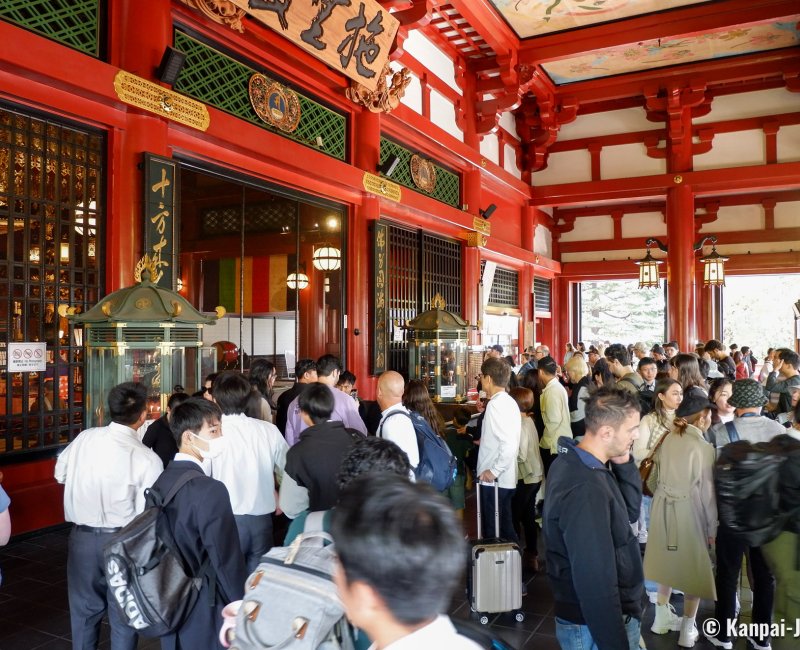
🗻 Fuji, Miyajima, Nara and others
Despite its importance, Kyoto is obviously not the only Japanese city affected by overtourism. The following places are the most popular among travelers in Japan:
- Mount Fuji 🗻, whose climbing is only possible from July 1rst to early September, which sometimes create congestion at the summit or on the way back down, to the point that its listing in the UNESCO World Heritage could be compromised;
- Miyajima, the island off Hiroshima, where tourists flock at the Itsukushima shrine, one of the 3 most beautiful landscapes of Japan; recently, jet-skis have even been spotted cruising under the floating torii (!);
- Nara, also in the Kansai area, whose deer suffered malnutrition during the Covid pandemic and are now well-fed (one even died in 2019 after eating more than 4kg plastic);
- Hakone and especially its transportation network, with as a figurehead, the cruise on Lake Ashi;
- Nikko, where temples and shrines the closest to the station are filled with crowds in peak seasons, weekends and holidays;
- Koya-san, the famous spiritual mountain of the Kii peninsula, a place deemed a "Buddhist Disneyland" by the shukubo themselves, where foreign visitors stay in the temples’ annexes;
- Some islands of Okinawa, especially Iriomote where local authorities have set a cap limited to 1,200 max visitors per day, and 330,000 per year, to preserve the lifestyle of the 2,400 residents and the local ecosystem; and,
- Lastly Tokyo, but to a lesser extend considering the size of the capital:
- Asakusa, specifically around the Senso-ji temple and Nakamise-dori shopping street;
- Harajuku, where Takeshita Dori, a former hot spot for teenage fashion, has become a cheap outdoor shopping mall;
- Shibuya, for the mention, as the ward’s officials are primarily concerned regarding 2 nights in the year: Halloween and the New Year eve.

💡 Measures to prevent mass tourism
🤷 State-level solutions
A fact that tends to be forgotten is that since 2019 all travelers to Japan are already paying a ¥1,000 (~US$6.97) tax, included in the flight ✈️’s price, collected to allegedly improve the country’s touristic infrastructures.
This fee, among other solutions, is actually a very common response to overtourism issues throughout the world:
- In Colmar, France (up to 150,000 visitors per day in December), the city is thinking of introducing a reservation or a fee system to visit its Christmas Market;
- In Amsterdam (more than 20 million tourists each year!), the tourist tax recently rose by 12,5 %, so it is now amounting to 22€ per night;
- In Venice (about 30 million yearly tourists!!), a 5€ tax will be put to the test this year for day-trip visitors on the yearly 30 days of very high season; groups of more than 25 persons and the use of speakers are likely to be forbidden soon.
As for the archipelago, measures at the local scale have been sheepishly implemented. For example, in October 2023 a ¥100 (~US$0.70) fee has been included in the ferry ⛴️ fare to Miyajima Island. As for Mount Fuji, the prefectures operating the climbing trails have implemented a ¥1,000 (~US$6.97) fee since 2013, first on a voluntary basis, and now required since 2020. A 4,000 climbers per day cap is also being contemplated.
In the meantime, the government is starting to tackle the issue. Since September 2023, despite the large revenue tourism is bringing to the country (nearly 10 % of its GDP), Prime Minister Fumio Kishida launched a series of measures against "over-tourism" spelled in katakana. They are displayed on the Ministry of tourism’s home page (Kankocho) and encompass among other things:
- More bus and taxis services;
- Communication against littering;
- Possible price rises on train tickets during the holidays periods (Golden Week in spring, Obon in August and New Year); and,
- Widening of travel destinations beside Tokyo and Kyoto (a measure for which it is doubtful anyone discussed with Japan Railways…) with the promotion of areas like Ise or Hokkaido.
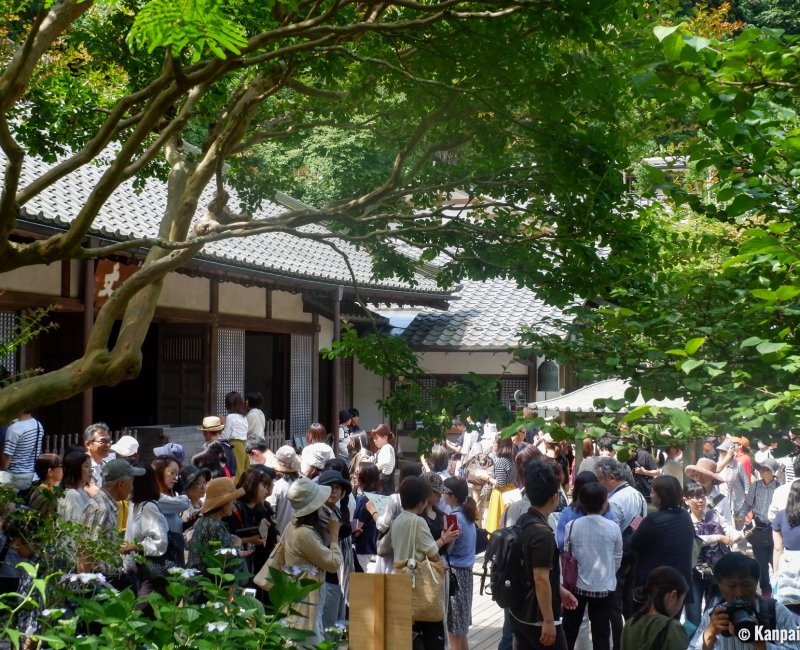
➡️ Easy and readily available solutions
It is somehow paradoxical to complain about mass tourism when traveling in the affected areas, as we must keep in mind that all the visitors constitute the tourist crowd and that everyone contributes to overtourism! However, there should not be guilting nor making foreigners the scapegoats: it should indeed be remembered that Japanese people are the primary tourists in their own country. Consequently, in many of the places mentioned above, you’ll never fail to see bus loaded with high schools students from neighboring prefectures in a school trip, or Japanese retirees roaming with thier big cameras 📷.
There are plenty of ways to avoid mass tourism, even occasionally obvious ones, as overtourism can be kept under control by managing time and space.
For example, no must-see place, even in Kyoto, is full at 7 a.m. on a weekday in mid-January! Therefore, the first logical solution is to travel in low season. Seasonal patterns are very strong in Japan, so choosing the less popular months (such as January, February, June or December) will both help finding more affordable prices and having a quieter trip.
If you can’t go any other time than the seasonal peak, and while the trick is becoming widely known, go to the trendy places early in the morning (usually before 9 a.m., to stay true to Japan’s reputation as "country of the Rising Sun") or in late afternoon, after sunset for places that do not close at night.
Accordingly, when not traveling during lower seasons, don’t fall for the Instagram trends and try not forcing your way to a "must-see". The archipelago extends on a 378,000 km² superficies, has tens of thousands temples and shrines, and probably hundred thousands torii gates, etc. Is it really worth it to queue for a selfie with the same torii gate as anyone on Instagram? Kanpai-Japan’s travel guide provides nearly 1,000 travel destinations in Japan and several new more are added each month, so there is no shortage of new places to discover. Overcrowding almost never happens in Hokkaido, Shikoku or in the Tohoku area… If you feel you don’t have time to explore all our available content, feel free to subscribe to our Newsletter to receive each day a visit suggestion for free!
As we often say on Kanpai-Japan: traveling in Japan requires to book the trip and plan activities in advance. There are so many benefits in a good planning ahead, and overall so many disappointment are avoided when doing it well; all the more as many accommodation, courses and experiences can’t be made without a good planning and timing well in advance. In the same vein, you might want avoiding restaurants in the most popular areas (some even rise their prices for the English menu) or eat there at the less busy hours, or even prefer an outdoor meal in parks when the weather is good.
With Japan’s increasing popularity, yesterday’s lower seasons and secret gems have gradually become better known. Indeed, before the mid-2010s, few international travelers ventured in the Japanese Alps or flew to Tokyo in September-October; both are now very common. Do not hesitate to have a Japan-specialist travel agent help you in choosing the good travel plan. If you don’t have the budget for a bespoke trip, you may try hiring a local private guide to explore off the beaten tracks: there is almost always beautiful quiet gems just a stone’s throw away from a bustling and hyper-busy touristic site. That can somewhat explain why the reviews of travelers in Kyoto vary so widely.
There is so much more to discover in Japan besides the most advertised places… You should not refrain from going based on what you hear or read in the media, but when you go, travel smart!

